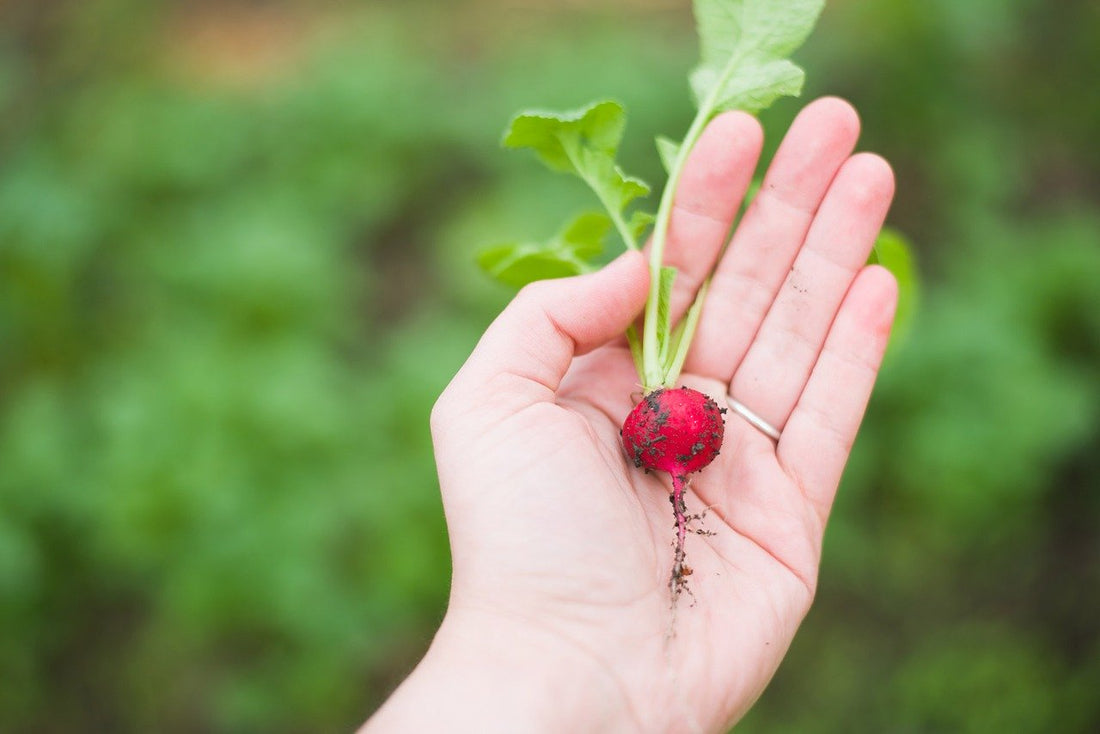
Five Things to Do in Your Vegetable Garden In August - That aren’t Weeding
It might seem that all you do in your garden is weed once the plants are in, but there are plenty of other things you can be doing to get the best out of your garden. Here are five for the month of August broken down by zones.
Don’t know your zone? Look it up here: https://planthardiness.ars.usda.gov/PHZMWeb/

Zones 4/5:
#1 Pull out any plants that have finished producing or have been damaged by the heat, disease or critters. Be a little ruthless - especially if it frees up enough space for a second crop.
#2 Plant some fast-growing crops to fill in any holes created by doing #1.Here are some plants that can still be planted in August. The greens are “mature” even quicker if you like microgreens.
- Arugula (1 month)
- Spinach (6 weeks)
- Baby carrots (1 month)
- Radishes (22-50 days depending on variety)
- Cucumbers (50 days)
- Beets (greens 30 days - bulb 50 days)
- Bush beans (40-60 days)
- Lettuce (25 days)
- Kale (25-60 days)
- Green Onions (1 month)
- Bok Choy
- Broccoli

#3 Save the seeds! Have a plant that did really well and was particularly delicious? Save some seeds! Not sure how to save seeds? Here is some good information on how to harvest and save seeds: University of Minnesota Extension
#4 Remove new flowers coming in on your tomatoes/melons/pumpkins/squash - What!?!? Yup - this will make the plant concentrate on the fruit it has already set, making them bigger and better! Some blossoms, like squash, are edible. Here are 5 recipes to try: https://www.thekitchn.com/five-ways-to-eat-squash-blosso-87564
#5 Watch your plants closely for signs of disease. The heat and humidity in August create the perfect conditions for many fungal diseases, including Powdery Mildew (see picture). Cut off the diseased leaves and DON”T put them in your compost heap! You should also wipe down the pruning shears and wash your gloves to help keep it from spreading. It is also a good idea to not plant the same vegetable in the same spot next year. Here is a good source, with pictures, for the types of plant diseases to watch out for: University of Maryland Extension.

Zones 6/7:
#1 Prune depleted berry patch canes and thin the strawberries. These crops can quickly get out of hand if not managed. Offer some of the strawberry plants to neighbors or co-workers.
#2 The dog days of August can be very dry, be sure to water your veggies deeply at least once a week - preferably early in the morning.
#3 Plant quick growing crops in any open spots (see list in above) for fresh food into the fall. Also put in garlic for a Spring crop.
#4 Save the seeds of vegetables that performed well. Not sure how to do that? Read how to here: University of Minnesota Extension

#5 Pick and preserve herbs to use for the rest of the year. Here are three ways to preserve herbs on HGTV’s site. When I want a quick “dried” herb I take some sprigs, wash them and then put them on a dish and microwave for a minute. Instant dried herbs!
Zones 8/9:
#1 Water! But not too much or you might promote fungal growth! See #5 in Zones 2/3/4 above for more information. If you can water below the leaves and in the morning that would be best.
#2 Create some shade - Some crops might need to be shaded during the blazing heat of August.
#3 Plant corn, cucumbers, squashes, beans, and herbs like dill and basil.
#4 Pinch blossoms off of plants you want to get bigger fruit from such as pumpkins, squash, etc.
#5 Pick and preserve herbs at the peak of their growth. Read about three ways to preserve herbs on HGTV’s site.

The key takeaway is that there is a lot more to gardening than just weeding. If you love to weed, and have the time and physical ability to do it - more power to you! If you struggle to find the time, or have some physical limitations that make weeding difficult, consider Tertill, the solar-powered weeding robot for home gardens. Tertill weeds your garden with the touch of a button and stays in your garden all season long keeping weeds from taking over. With Tertill as your garden helper, you can have more time to do other things that can produce more food for you and your family.
Happy gardening!
